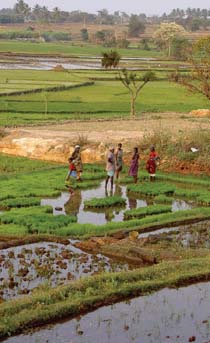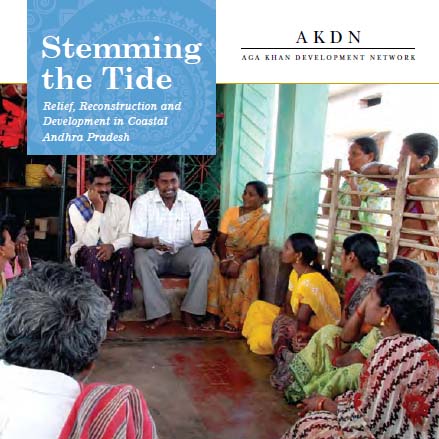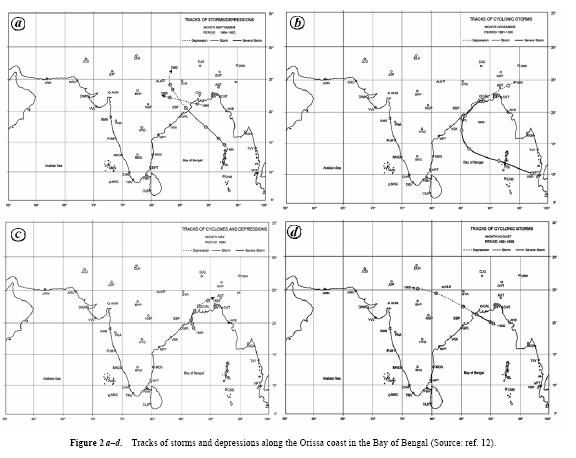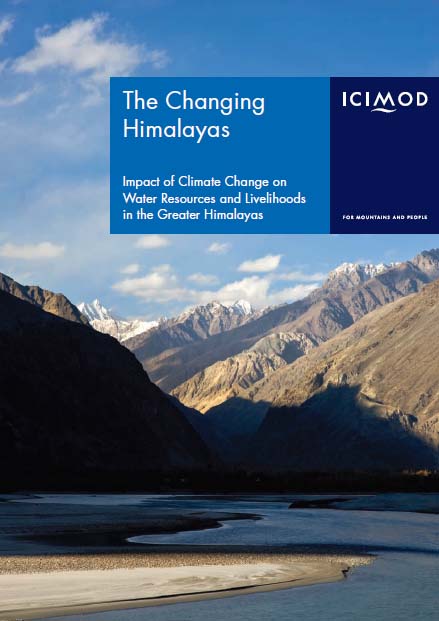Droughts and Floods
Faster, sustainable and more inclusive growth – An approach to the twelfth five year plan – Draft report by Planning Commission
Posted on 03 Sep, 2011 09:28 AMThis draft report by the Planning Commission, which presents an approach to the twelfth five year plan among other things outlines some of the challenges related to agriculture, natural resources management and water resources management.
Adaptive water resource management in the Lower Bhavani project command area in Tamil Nadu – A research report by IWMI
Posted on 25 Aug, 2011 11:07 PM
To what extent farmers and water resource managers already practice adaptive management and whether it is practiced in an optimal manner or could there be areas for improvement based on recent advancements in the theory of adaptive management are some of the questions that are particularly appropriate in the light of rapid changes in river basin water use and also in relation to basin closure.
This paper draws on the development and use of water resources in the Lower Bhavani Project (LBP), with the LBP reservoir and the 84,000 hectare (ha) LBP command area. The project diverts water from the Bhavani River, a tributary of the Cauvery River in Tamil Nadu.
Seasonal prediction of the Indian monsoon - A paper from Current Science
Posted on 25 Aug, 2011 02:07 AMThis paper published in Current Science presents the results of the national project on ‘Seasonal Prediction of the Indian Monsoon’ (SPIM), which involved a comparison of the skill of the atmospheric models used in the country for prediction of the summer monsoon, in simulation of the year-to-year variation of the summer monsoon rainfall over the Indian region for 1985–2004.
Boundary concepts for interdisciplinary analysis of irrigation water management – A working paper by Peter Mollinga
Posted on 24 Aug, 2011 07:16 PMThe focus is concepts that capture the hybridity of irrigation systems as complex systems, and cross the boundaries of the natural and social sciences.
Rural drinking water supply and sanitation - Standard operating procedure for responding to natural disasters - Department of Drinking Water and Sanitation
Posted on 05 Aug, 2011 08:37 PMThis standard operating procedure developed by the Department of Drinking Water and Sanitation includes all functions pertaining to disaster prevention, institutional mechanism, preparedness, early warning, relief, recovery and rehabilitation. It will apply to RWSS Department/ PHED/ PRED/ Sanitation Departments/ Board dealing with rural water supply and sanitation for natural disasters that the State is prone to. The standard operating procedure will not be applicable to nuclear, biological and chemical disasters.
Stemming the tide - Relief, reconstruction and development in coastal Andhra Pradesh – A report by Aga Khan Development Network
Posted on 05 Aug, 2011 02:35 PM Its aim aim was to improve the capacity of target communities to better manage in times of disaster. To set in motion a process that would sustain a short-term project, the Aga Khan Development Network drew on guiding principles developed from its experiences of projects in disaster reconstruction and more comprehensive development programs: high-quality community-based interventions, working on multiple fronts, and fostering linkages with strong institutional partners.
Its aim aim was to improve the capacity of target communities to better manage in times of disaster. To set in motion a process that would sustain a short-term project, the Aga Khan Development Network drew on guiding principles developed from its experiences of projects in disaster reconstruction and more comprehensive development programs: high-quality community-based interventions, working on multiple fronts, and fostering linkages with strong institutional partners.
At the core of the project’s disaster management and mitigation strategy was the creation of empowered and highly motivated community-based organizations; their participation was critical in shaping and implementing initiatives that would best serve the needs of the vulnerable, particularly women and children.
Role of cyclones and other factors in the decline of the ports of northern Orissa - Current Science
Posted on 30 Jul, 2011 01:23 AM This article published in Current Scienc
This article published in Current Scienc
The changing Himalayas - Impact of climate change on water resources and livelihoods in the Greater Himalayas – A report by ICIMOD
Posted on 27 Jul, 2011 09:56 PM The greater Himalayan region “the roof of the world” – contains the most extensive and rugged high altitude areas on Earth, and the largest areas covered by glaciers and permafrost outside the polar regions.
The greater Himalayan region “the roof of the world” – contains the most extensive and rugged high altitude areas on Earth, and the largest areas covered by glaciers and permafrost outside the polar regions.
The sector programme and climate change initiatives in Uttarakhand
Posted on 27 Jul, 2011 02:54 PMRecent scientific studies show that global warming is already causing environmental changes that will have significant global economic and social impacts. As the world's 4th largest emitter of greenhouse gases, India has to juggle the imperative demand for economic development with pressures for greater efficiency in the use of energy.
Climate change is a change in the statistical properties of the climate system when considered over long periods of time, regardless of cause. Climate change reflects a change in the energy balance of the climate system, i.e. changes the relative balance between incoming solar radiation and outgoing infrared radiation from Earth. The threat emanates from accumulated green house gas emissions in the atmosphere, generated through long term and intensive industrial growth and high consumption life styles of developed countries.




